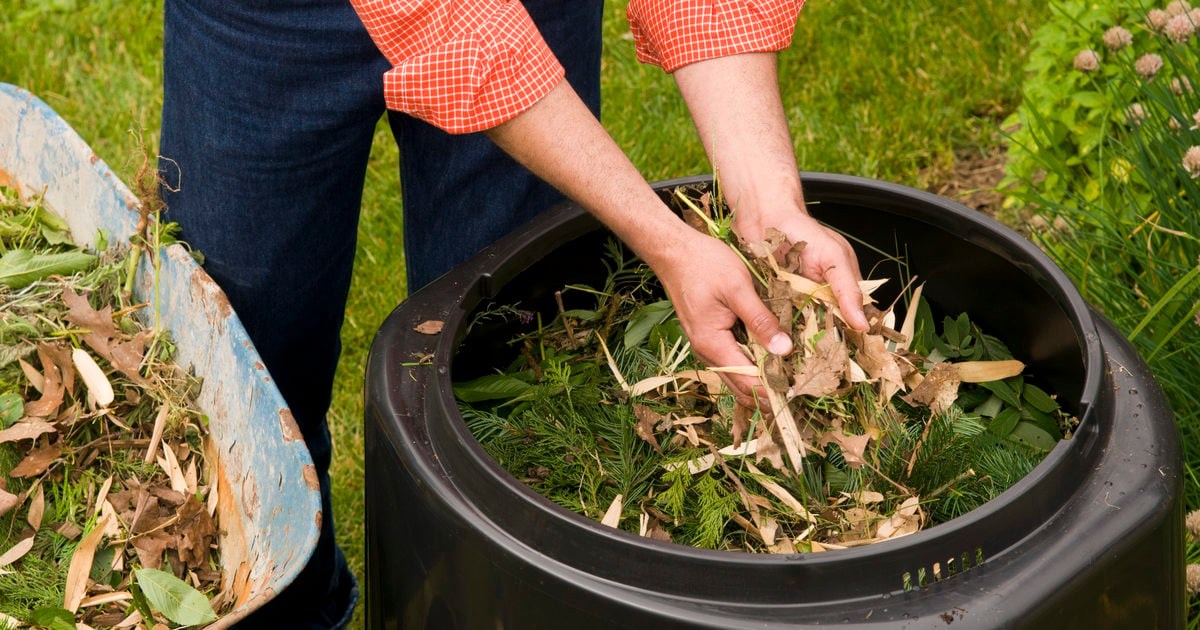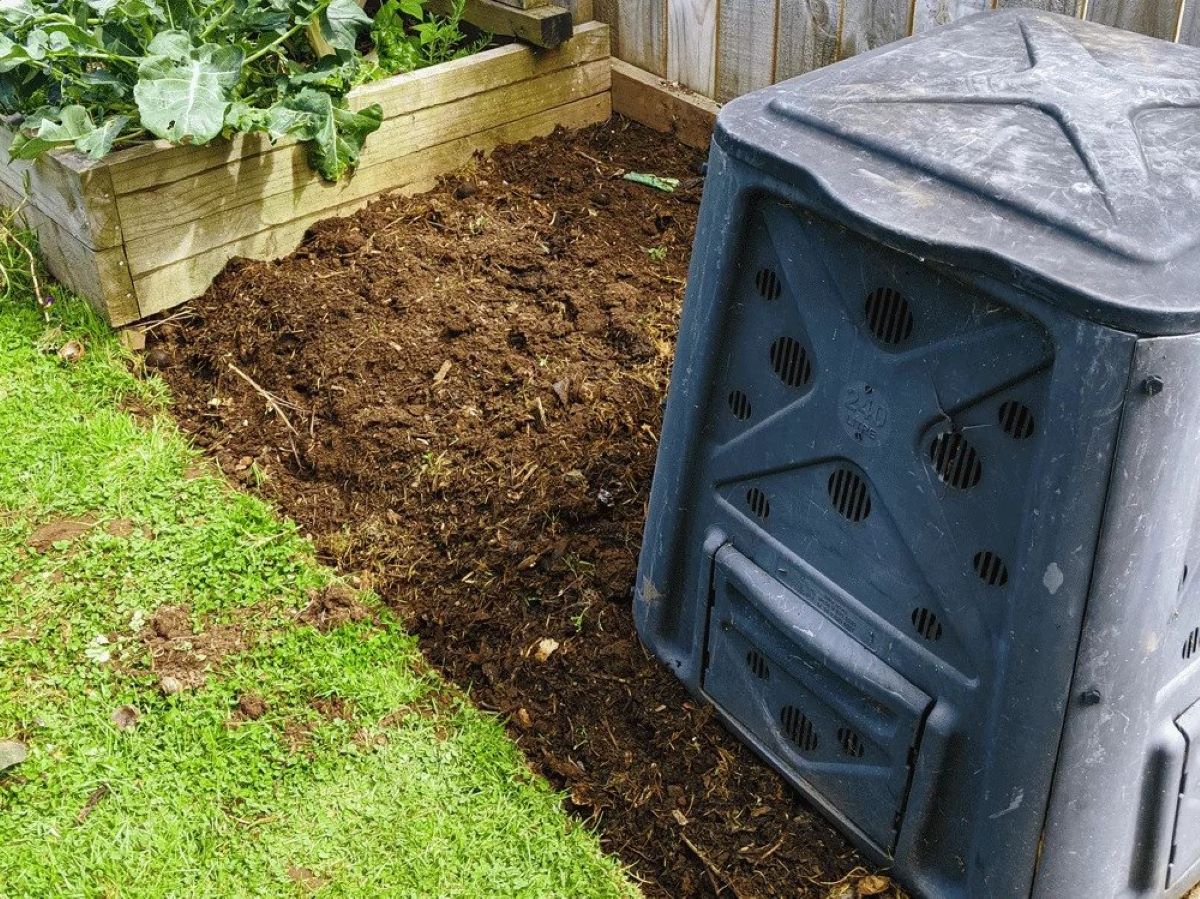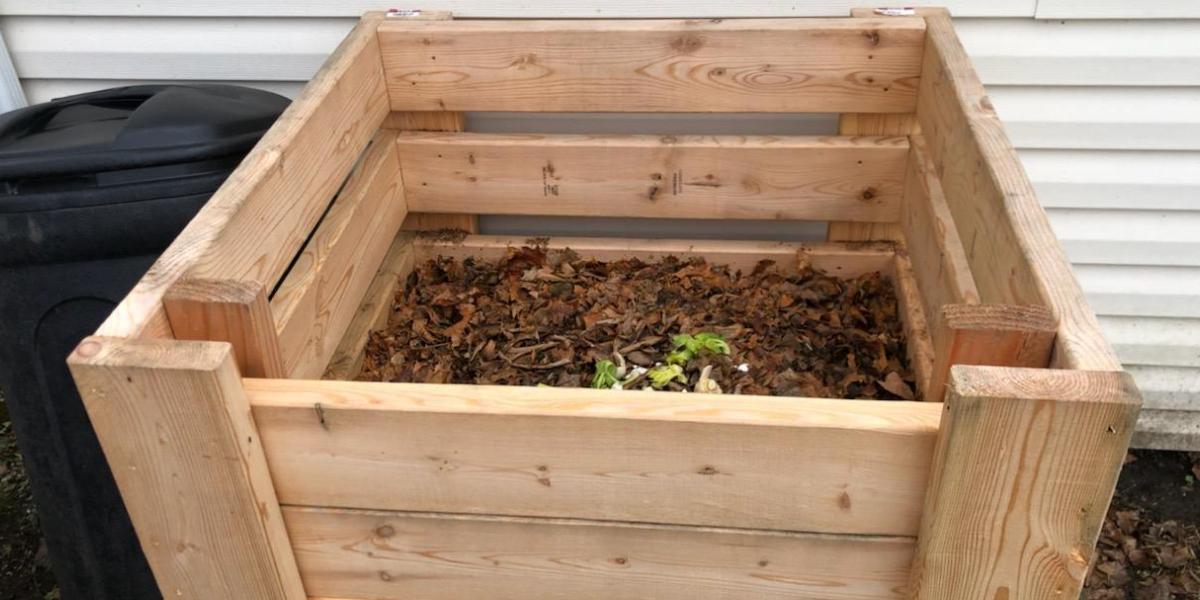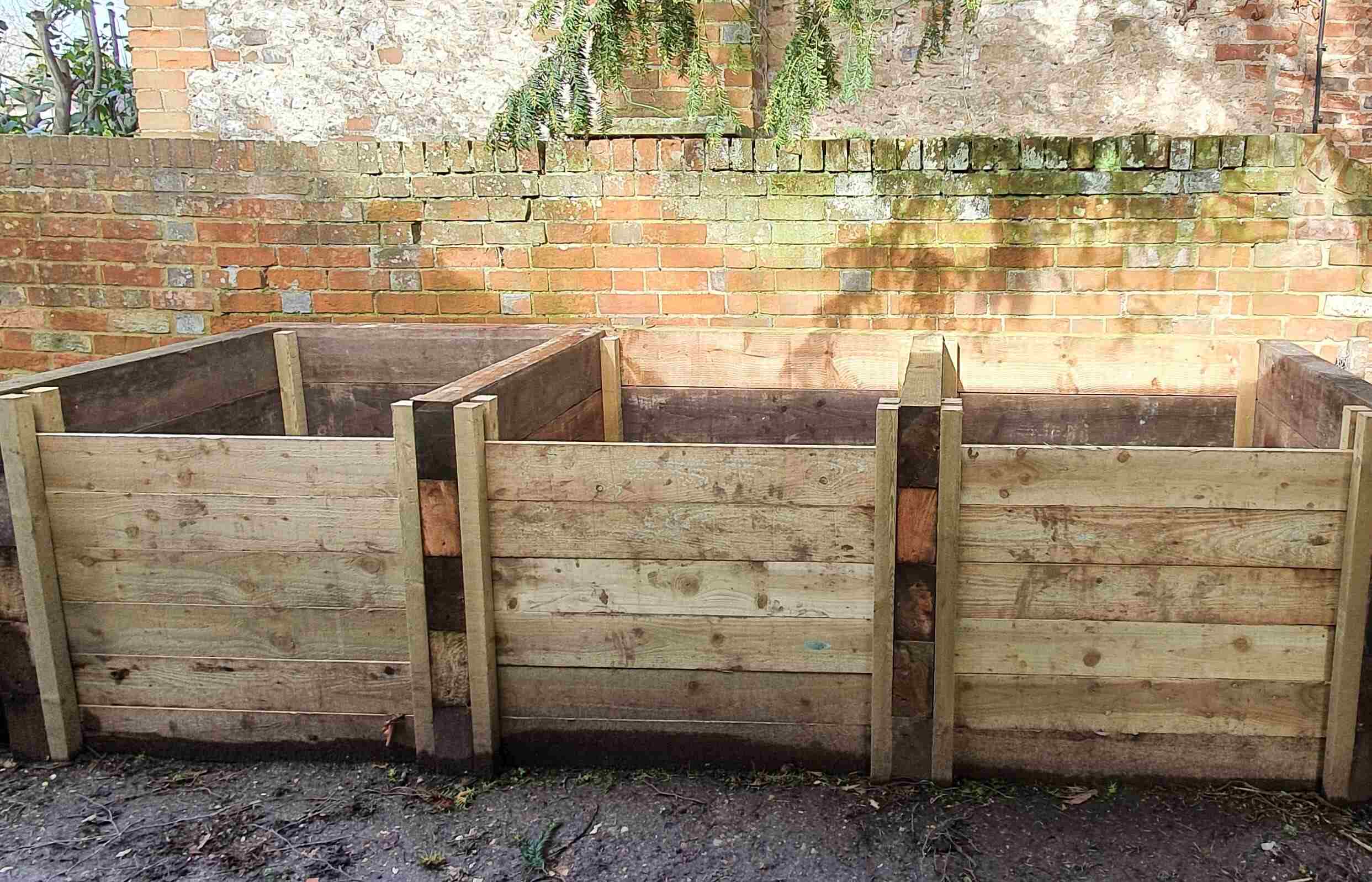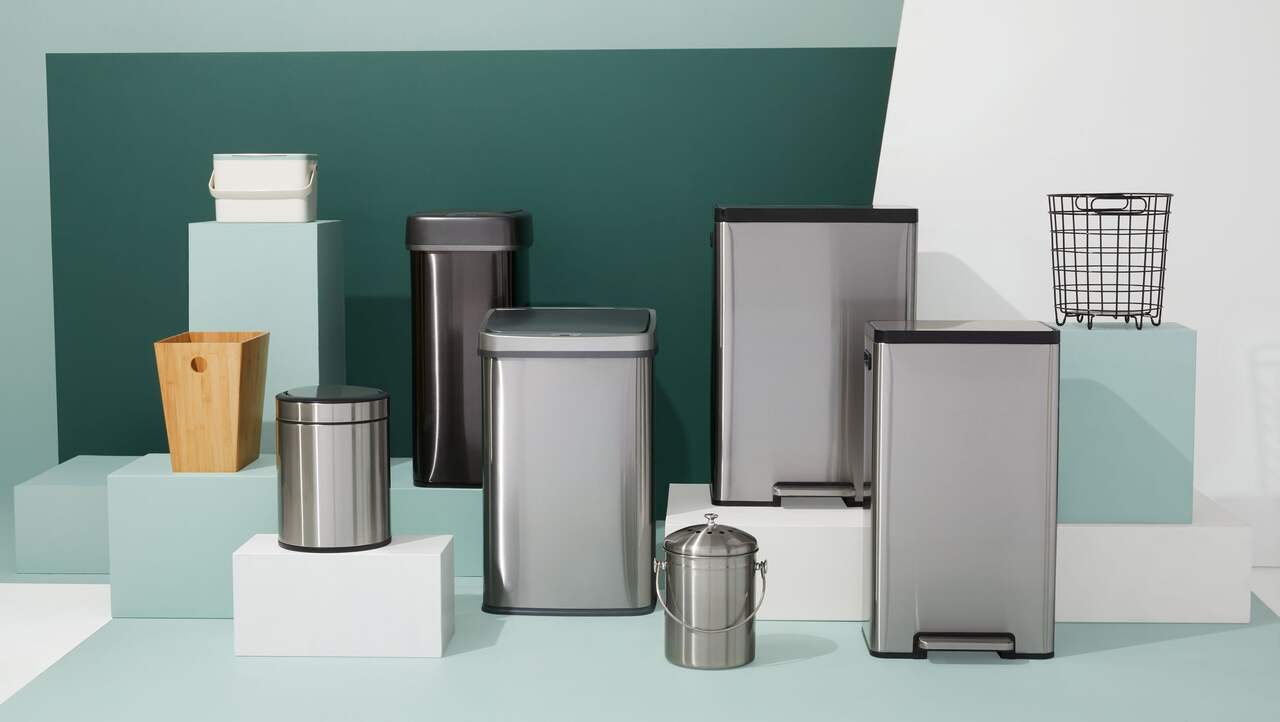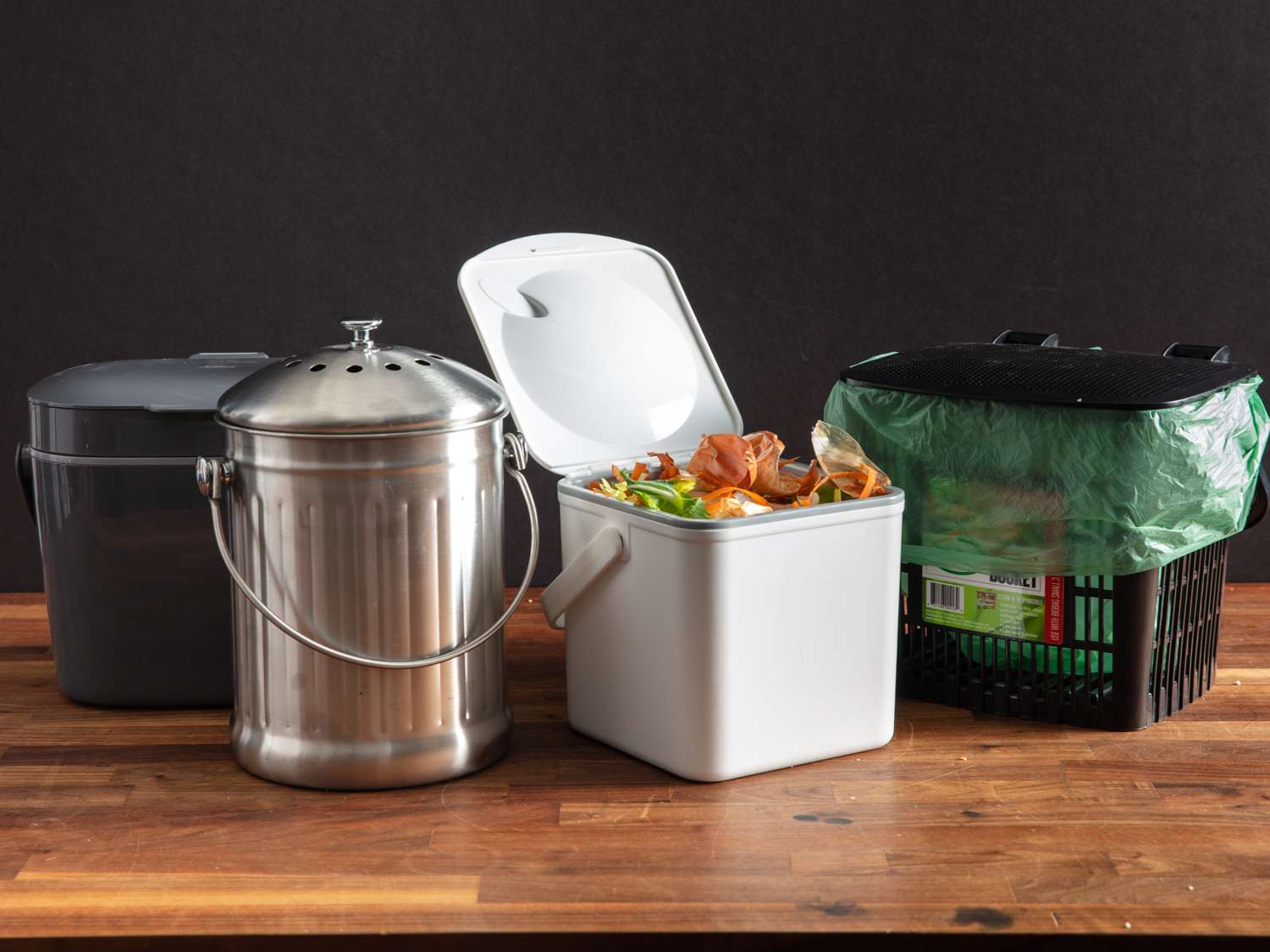Home>Gardening News and Trends>Latest News>What Goes In Compost Bin California
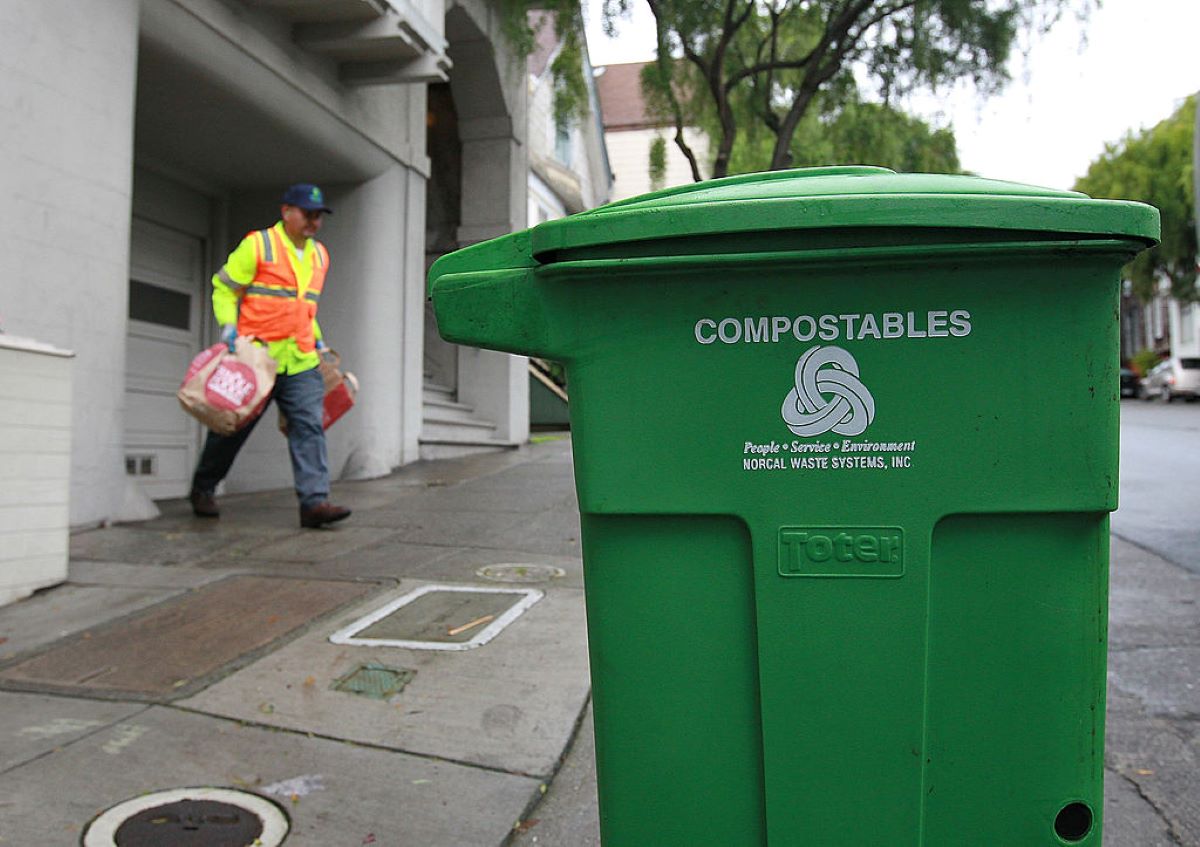

Latest News
What Goes In Compost Bin California
Modified: January 22, 2024
Learn what goes in a compost bin in California and stay updated with the latest news and information.
(Many of the links in this article redirect to a specific reviewed product. Your purchase of these products through affiliate links helps to generate commission for Chicagolandgardening.com, at no extra cost. Learn more)
Table of Contents
- Introduction
- Benefits of Composting in California
- What Can Go in a Compost Bin in California
- Yard Waste
- Fruit and Vegetable Scraps
- Coffee Grounds and Filters
- Eggshells
- Tea Bags
- Nut Shells
- Paper Products
- Dry Leaves and Grass Clippings
- Wood Chips and Sawdust
- Pine Needles
- What Should Not Go in a Compost Bin in California
- Meat and Dairy Products
- Oily and Greasy Food Scraps
- Pet Waste
- Diseased Plants
- Invasive Plants
- Glossary
- Conclusion
Introduction
Composting is an eco-friendly practice that can significantly reduce our environmental footprint and contribute to the health and sustainability of our planet. In California, where environmental consciousness is highly valued, composting plays a crucial role in waste management and soil enrichment. By diverting organic waste from landfills and turning it into nutrient-rich soil, composting helps combat climate change, conserve water, and support the growth of healthy plants.
California is home to a diverse range of ecosystems, from the lush forests of the Sierra Nevada to the arid deserts of Death Valley. This diversity extends to the materials that can be composted in the state. Understanding what can and cannot go in a compost bin in California is essential to ensure the effectiveness of the composting process and minimize potential negative impacts.
In this article, we will explore the benefits of composting in California and provide a comprehensive list of organic materials that can be added to a compost bin. We will also highlight some items that should not be included in order to maintain a healthy and productive composting system. Whether you are a seasoned composter or just getting started, this guide will help you make the most of your composting efforts in California.
Benefits of Composting in California
Composting offers numerous benefits that go beyond waste management. Here are some of the key advantages of composting in California:
- Reduces Landfill Waste: By composting organic materials such as food scraps and yard waste, we can divert significant amounts of waste from ending up in landfills. This helps reduce greenhouse gas emissions and the production of methane, a potent greenhouse gas.
- Improves Soil Health: Compost is a natural fertilizer and soil amendment that enriches the soil with essential nutrients, organic matter, and microorganisms. By adding compost to gardens, lawns, and agricultural fields, we can improve soil structure, water retention, and overall plant health.
- Conserves Water: Compost acts as a sponge, helping soil retain moisture and reducing the need for excessive watering. In drought-prone regions like California, where water scarcity is a significant concern, composting plays a vital role in water conservation.
- Enhances Plant Growth: The nutrients and microorganisms present in compost promote healthy root development and stimulate plant growth. By using compost, gardeners and farmers can achieve higher yields, stronger plants, and more vibrant flowers and fruits.
- Reduces the Need for Chemical Fertilizers: Compost provides a natural and organic alternative to synthetic fertilizers, reducing reliance on chemicals that can harm the environment and human health. By using compost, gardeners and farmers can reduce their ecological footprint and promote sustainable agriculture.
- Reduces Soil Erosion: By improving soil structure and water absorption capacity, compost helps prevent soil erosion. This is particularly important in California, where many regions are prone to erosion due to heavy rainfall and wildfires.
- Supports Biodiversity: Healthy soils created by composting support a diverse range of beneficial organisms, including earthworms, insects, and microorganisms. This biodiversity is essential for maintaining ecosystem balance and promoting natural pest control.
These benefits demonstrate the importance of composting in California. By incorporating composting into our daily lives, we can contribute to a more sustainable and resilient future for the state and beyond.
What Can Go in a Compost Bin in California
Composting is a versatile process that can accommodate a wide range of organic materials. In California, you can add the following items to your compost bin:
- Yard Waste: This includes grass clippings, leaves, small branches, and plant trimmings. Make sure to cut larger items into smaller pieces to facilitate decomposition.
- Fruit and Vegetable Scraps: Almost all fruit and vegetable scraps can go into the compost bin. This includes peels, cores, stems, and seeds. Avoid adding citrus peels in large quantities as they can slow down the composting process.
- Coffee Grounds and Filters: Used coffee grounds and filters provide a rich source of nitrogen. They can be added to the compost bin without any issues.
- Eggshells: Crushed eggshells are a good source of calcium and can be added to your compost. They break down slowly, so make sure to crush them well to speed up the decomposition process.
- Tea Bags: Used tea bags, as long as they are made from plant-based materials, can be composted. Remove any staples or plastic tags before adding them to the compost bin.
- Nut Shells: Nut shells, such as those from walnuts, pecans, and almonds, can be composted. However, avoid adding shells from peanuts or other types treated with salt or other chemicals.
- Paper Products: Uncoated paper products, such as newspaper, shredded paper, paper bags, and cardboard, can be composted. Avoid glossy or coated paper as they may contain chemicals that are not suitable for composting.
- Dry Leaves and Grass Clippings: Dry leaves and grass clippings are excellent sources of carbon. They provide the necessary balance to the nitrogen-rich materials in the compost bin.
- Wood Chips and Sawdust: Small amounts of untreated wood chips and sawdust can be added to the compost. They help improve aeration and add carbon to the mix.
- Pine Needles: Pine needles, also known as pine straw, can be composted, but in moderate amounts. They decompose slowly, so mix them well with other materials to speed up the process.
By including these organic materials in your compost bin, you can create a nutrient-rich compost that will benefit your plants and the environment.
Yard Waste
Yard waste is an abundant and valuable resource that can greatly contribute to the composting process in California. It includes a variety of materials typically found in outdoor spaces, such as gardens, lawns, and landscapes. Here are some examples of yard waste that can be added to your compost bin:
- Grass Clippings: After mowing your lawn, collect the grass clippings and add them to your compost bin. They are rich in nitrogen and will help speed up the decomposition process. Make sure to mix them well with other materials to prevent clumping.
- Leaves: Fallen leaves are an excellent carbon-rich addition to your compost. They provide a good balance to the nitrogen-rich materials, such as food scraps. Shred the leaves before adding them to the compost bin to help speed up the decomposition process.
- Plant Trimmings: When pruning your plants, save the trimmings and add them to your compost bin. Cut them into smaller pieces to facilitate decomposition. Avoid adding diseased or pest-infested plant material to prevent the spread of pathogens or pests in your compost.
- Small Branches and Twigs: If you have pruned or trimmed trees or shrubs, chop the small branches and twigs into smaller pieces and add them to your compost bin. They provide structure and aeration to the compost pile.
- Weeds (Non-Invasive): Non-invasive weeds can be composted, but it’s important to ensure they are free from seeds. Avoid adding weeds that have gone to seed, as they may spread in your compost and eventually germinate when you use the finished compost in your garden.
- Dead Flowers and Plants: When flowers wilt or plants die, collect them and add them to your compost bin. They will break down and contribute to the nutrient content of the compost.
Remember to mix your yard waste with other compost materials, such as fruit and vegetable scraps, to achieve the right balance of carbon and nitrogen. This will help create a healthy and productive compost pile. Regular turning or mixing of the compost will also help aerate the pile and speed up the decomposition process.
By utilizing yard waste in your composting efforts, you can reduce organic waste from ending up in landfills and create nutrient-rich compost that will benefit your plants and the environment.
Fruit and Vegetable Scraps
Fruit and vegetable scraps are excellent additions to your compost bin in California. They are abundant, readily available, and provide valuable nutrients for your compost. Here are some examples of fruit and vegetable scraps that can be composted:
- Peels: The peels of fruits and vegetables, such as apples, oranges, carrots, and potatoes, can all be composted. They break down relatively quickly and add valuable organic matter to the compost.
- Cores and Stems: Apple cores, broccoli stems, and other similar parts can be composted as long as they are not too large. Chop them into smaller pieces to speed up the decomposition process.
- Seeds: The seeds of vegetables like tomatoes, cucumbers, and peppers can be composted. However, if you are concerned about unwanted seedlings sprouting in your garden from the compost, you can choose to dispose of the seeds separately.
- Leaves: The outer leaves of vegetables such as lettuce and cabbage, as well as the tops of root vegetables like beets and carrots, can be composted. They add valuable organic matter and nutrients to your compost.
- Overripe or Spoiled Produce: If you have fruits or vegetables that have gone bad or spoiled, you can compost them instead of throwing them away. These items will break down quickly in the compost bin.
- Cooked Vegetables: Leftover cooked vegetables can also be added to your compost bin. However, avoid adding large quantities of cooked foods or heavily seasoned items, as they can attract unwanted pests.
As you add fruit and vegetable scraps to your compost bin, aim for a good balance between green (nitrogen-rich) and brown (carbon-rich) materials. Fruit and vegetable scraps are considered green materials, so be sure to add an adequate amount of brown materials, such as dry leaves or shredded paper, to maintain the right carbon-to-nitrogen ratio.
Avoid adding large quantities of citrus peels to your compost, as they can be slow to break down and may affect the pH of the compost. It is also a good practice to chop larger fruit and vegetable scraps into smaller pieces to speed up decomposition.
By composting your fruit and vegetable scraps, you not only reduce organic waste but also create nutrient-rich compost that can be used to nourish your garden and support healthier plant growth.
Coffee Grounds and Filters
If you’re a coffee lover, you’ll be delighted to know that coffee grounds and filters are excellent additions to your compost bin in California. Here’s why:
Coffee Grounds: Coffee grounds are a rich source of nitrogen, a crucial nutrient for your compost. They also add moisture and help in the breakdown of organic matter. Whether you use a French press, espresso machine, or a traditional coffee maker, you can easily incorporate coffee grounds into your compost.
Feel free to add used coffee grounds to your compost bin. These grounds have already been brewed, so they won’t alter the pH of your compost pile significantly. As a bonus, coffee grounds can also deter pests like slugs and snails in your garden!
Coffee Filters: If you use paper filters when brewing your coffee, you can compost them along with your coffee grounds. Paper coffee filters are made from natural materials and will readily decompose in your compost bin. However, avoid using filters that are lined with plastic, as they will not break down and can contaminate the compost.
Before adding coffee filters to your compost bin, it’s a good practice to tear them into smaller pieces to promote faster decomposition. This allows the microorganisms in your compost to access the filters and break them down more efficiently.
Remember that coffee grounds and filters count as “green” materials in composting, which means they are rich in nitrogen. To maintain a well-balanced compost, be sure to add “brown” materials, such as leaves or shredded paper, to provide the necessary carbon to nitrogen ratio.
Overall, coffee grounds and filters are fantastic additions to your compost pile. By incorporating them, you’ll not only divert waste from landfills but also contribute valuable nutrients to your compost, creating a fertile environment for plant growth and soil health.
Eggshells
Eggshells are a fantastic addition to your compost bin in California. They are rich in calcium, which is an essential nutrient for plant growth and a valuable component of healthy compost. Here’s how you can incorporate eggshells into your composting routine:
Crushing the Eggshells: Before adding eggshells to your compost bin, it’s essential to crush them into smaller pieces. This helps speed up the decomposition process and ensures that the shells break down effectively. You can crush them by hand or use a mortar and pestle to make them easier to manage.
Adding Calcium to Compost: Eggshells contribute important nutrients to your compost, such as calcium and trace minerals. These nutrients are crucial for plant growth, especially for plants that require higher levels of calcium, like tomatoes and peppers. Adding crushed eggshells to your compost enriches the nutrient content and helps create a well-balanced mix.
Preventing Pests: Crushed eggshells can also act as a natural pest deterrent in your compost. The sharp edges of the eggshells discourage pests like slugs and snails from entering your compost bin, protecting your organic waste from being damaged or consumed.
Neutralizing Acidity: Eggshells have a natural pH close to neutral, which means they can help balance the acidity level in your compost. If you have acidic materials, such as citrus peels, in your compost, adding crushed eggshells can help counteract their effect and maintain a more balanced pH environment.
Remember to crush the eggshells and mix them well with the other compost materials to ensure they decompose effectively. You can add eggshells regularly to your compost bin, but avoid adding too many at once, as it can disturb the carbon-to-nitrogen ratio. Maintaining a well-balanced mix of organic materials is crucial to creating high-quality, nutrient-rich compost.
By adding eggshells to your compost, you not only reduce waste but also provide valuable nutrients to enhance the fertility of your soil. Whether you’re a seasoned gardener or just starting, incorporating eggshells into your composting routine is a simple and effective way to support plant health and sustainable gardening practices.
Tea Bags
Tea bags are a convenient and beneficial addition to your compost bin in California. They offer a rich source of nutrients and organic matter that can enhance the quality of your compost. Here’s how you can incorporate tea bags into your composting routine:
Choose Plant-based Tea Bags: When composting tea bags, it’s important to ensure they are made from plant-based materials. Avoid tea bags that contain synthetic fibers or chemicals, as they may not break down completely and can introduce unwanted substances into your compost.
Remove Staples and Tags: Before composting tea bags, be sure to remove any staples, strings, or tags attached to them. These materials are typically not compostable and can interfere with the decomposition process. Simply tear open the tea bags and pour the contents into your compost bin.
Balance Carbon and Nitrogen: Tea bags are considered “green” materials in composting, as they contain a relatively high amount of nitrogen. To maintain a balanced compost, it’s important to mix tea bags with “brown” materials, like dry leaves or shredded paper, which provide carbon. This balance ensures proper decomposition and a healthy compost pile.
Infused or Uninfused Tea Bags: Both infused and uninfused tea bags can be composted. If you have used tea bags, make sure to allow them to cool and dry out before adding them to your compost. This prevents unwanted moisture buildup in the compost pile.
Loose Leaf Tea: If you prefer loose leaf tea, the tea leaves can also be composted directly without the need for tea bags. The loose tea leaves contribute to the organic matter and nutrient content of your compost.
Remember to mix tea bags thoroughly into your compost pile, ensuring good aeration and moisture balance. Regularly turning or mixing the compost helps speed up the decomposition process and ensures that all materials, including tea bags, break down effectively.
By composting tea bags, you divert waste from landfills and create nutrient-rich compost that will benefit your garden. The organic matter and nutrients in tea bags contribute to healthy soil and encourage vibrant plant growth. So, the next time you enjoy a cup of tea, remember to save those used tea bags for your compost bin!
Nut Shells
Nut shells are a great addition to your compost bin in California. They not only add valuable organic matter to your compost but also provide some unique benefits. Here’s how you can incorporate nut shells into your composting routine:
Types of Nut Shells: Various nut shells can be composted, such as those from walnuts, pecans, almonds, and hazelnuts. These shells are rich in carbon and add a fibrous texture to your compost, promoting better aeration and moisture retention.
Crushing Nut Shells: Before adding nut shells to your compost, it is recommended to crush them into smaller pieces. Crushing the shells helps accelerate their decomposition since the smaller pieces break down more quickly. You can use a mortar and pestle or other tools to crush them effectively.
Avoid Salted Nut Shells: It is essential to avoid composting nut shells that have been salted or flavored. These shells may contain added chemicals or excessive salt, which can negatively impact the composting process and your plants’ health. Stick to plain, untreated nut shells for composting.
Add in Moderation: While nut shells can be composted, it’s best to add them in moderation. Large quantities of nut shells may take longer to decompose and can create a dense, compacted mass in your compost pile. It’s important to maintain a balanced mix of green (nitrogen-rich) and brown (carbon-rich) materials in your compost, so use nut shells as one component among many.
Benefit of Nut Shells: Nutric shells, due to their fibrous nature, can help improve the overall structure of your compost. They create air pockets that enhance drainage and aeration, preventing the compost from becoming too compacted. Additionally, the slow decomposition of nut shells can contribute to a longer-lasting compost, providing sustained nutrient release over time.
Remember to mix the crushed nut shells thoroughly with the rest of your compost materials. Regularly turning or mixing the compost pile helps distribute the nut shells evenly, promoting decomposition and maintaining a healthy composting environment.
By composting nut shells, you can reduce waste, improve the texture of your compost, and create nutrient-rich soil amendments for your garden. Enjoy the natural benefits of incorporating nut shells into your composting efforts in California.
Paper Products
Paper products are versatile additions to your compost bin in California. They contribute valuable carbon and help create a well-balanced mix for optimal composting. Here are some paper products that you can compost:
- Newspaper: Uncoated newspaper is an excellent source of carbon for your compost. Shred or tear the newspaper into small pieces before adding it to the compost bin. Avoid glossy or colored pages, as they may contain chemicals that are not suitable for composting.
- Shredded Paper: Paper materials like office paper, junk mail, and cardboard can be composted after shredding into smaller pieces. These materials can provide carbon, aiding in the decomposition process. Be sure to remove any plastic windows or non-compostable materials before composting.
- Paper Bags: Uncoated paper bags, such as those used for grocery shopping or packaging, can be composted. Tear them into smaller pieces or shred them before adding them to your compost bin.
- Cardboard: Cardboard, particularly those without glossy coatings, can be composted. Tear or cut the cardboard into smaller pieces to facilitate decomposition. Avoid cardboard with excessive ink or tape, as these non-compostable components should be removed before composting.
- Egg Cartons: Paper egg cartons can be composted as long as they are not coated with plastic or foam. Tear them into smaller pieces before adding them to your compost bin.
- Paper Towels and Napkins: Used plain paper towels and napkins can be composted. Make sure they are not contaminated with any non-compostable substances like chemicals, grease, or cleaning agents.
When composting paper products, it’s crucial to achieve a balance between “green” (nitrogen-rich) and “brown” (carbon-rich) materials. Paper products are considered “brown” materials, which provide the carbon necessary for the composting process. Combining paper products with “green” materials such as food scraps or grass clippings helps maintain the right carbon-to-nitrogen ratio.
To facilitate decomposition, ensure that paper materials are moist but not overly wet. If they become too wet, they can clump together and impede airflow within the compost pile. Regularly turning or mixing the compost helps evenly distribute the paper products and promote the decomposition process.
By composting paper products, you reduce waste and transform them into nutrient-rich compost. This process promotes sustainability, as you give new life to materials that would otherwise end up in a landfill. Incorporate paper products into your composting routine to contribute to the health of your garden and the environment.
Dry Leaves and Grass Clippings
Dry leaves and grass clippings are valuable additions to your compost bin in California. They provide a balanced mix of carbon and nitrogen, essential for successful composting. Here’s how you can incorporate these materials into your composting routine:
Dry Leaves: Fallen leaves are abundant in California, especially during the autumn season. Dry leaves are rich in carbon, making them an ideal “brown” material for your compost. Shred or crumble the leaves into smaller pieces to speed up the decomposition process. Avoid using leaves that have been treated with chemicals or contaminated with pesticides.
Grass Clippings: When mowing your lawn, collect the grass clippings and add them to your compost bin. Freshly cut grass is a valuable source of nitrogen, providing essential nutrients for the compost. To prevent clumping, mix grass clippings with other compost materials like dry leaves or shredded paper. Make sure to avoid using grass clippings that have been treated with herbicides or pesticides.
Carbon-to-Nitrogen Ratio: Maintaining a proper balance of carbon-to-nitrogen (C:N) ratio is crucial in composting. Dry leaves and grass clippings contribute carbon (C), while food scraps or green materials contribute nitrogen (N). Aim for a ratio of about 30 parts carbon to 1 part nitrogen for optimal composting. Mixing dry leaves and grass clippings with other green materials helps achieve this balance.
Layering: Layering dry leaves and grass clippings can help create a well-structured compost pile. Alternate layers of dry leaves, grass clippings, and other compost materials, ensuring that each layer is relatively thin. This layering technique promotes better airflow and prevents the compost from becoming too dense or compacted.
Moisture Management: Dry leaves and grass clippings can help maintain proper moisture levels in your compost pile. While adding these materials, it’s essential to monitor the moisture content and ensure it remains moist but not overly wet. Water the compost pile or adjust the moisture by adding dry leaves or grass clippings as needed.
Regularly turning or mixing the compost pile ensures that the dry leaves and grass clippings are evenly distributed and aids in the decomposition process. This activity also encourages the breakdown of the materials, prevents odors, and promotes aeration.
By incorporating dry leaves and grass clippings into your compost, you contribute to waste reduction and create nutrient-rich soil amendments. Making use of these readily available organic materials helps build sustainable practices and supports a healthy garden ecosystem.
Wood Chips and Sawdust
Wood chips and sawdust are beneficial additions to your compost bin in California. They provide a good source of carbon, improve aeration, and enhance the overall structure of your compost. Here’s how you can incorporate wood chips and sawdust into your composting routine:
Untreated Wood: When using wood chips or sawdust for composting, it’s important to ensure that they come from untreated wood. Treated wood may contain chemicals that can be harmful to your plants and the environment. Stick to natural, untreated wood materials.
Carbon Source: Wood chips and sawdust are considered “brown” materials, rich in carbon. They help balance the ratio of carbon to nitrogen (C:N) in your compost pile. Mixing wood chips and sawdust with “green” materials, such as kitchen scraps or grass clippings, helps create an optimal environment for decomposition.
Moisture Absorption: Wood chips and sawdust have excellent moisture-absorbing properties. They act as sponges, helping to retain moisture in the compost pile. However, this can also cause them to decompose more slowly than other materials. To counteract this, ensure that there is sufficient moisture in your compost and regularly turn or mix the pile to promote even decomposition.
Enhancing Aeration: Wood chips and sawdust provide a loose, fibrous texture to your compost, improving aeration throughout the pile. The spaces between the wood chips allow for better airflow, which is essential for the composting process. This helps prevent the compost from becoming compacted and allows beneficial microorganisms to thrive.
Small Particle Size: Sawdust has a finer texture compared to wood chips, which can compact easily. To prevent clumping and promote decomposition, mix sawdust with other compost materials, ensuring a balanced mix of particle sizes. Wood chips, on the other hand, are larger in size and can be added directly to the compost pile.
Wood chips and sawdust are suitable for various composting methods, including traditional bin composting, compost piles, or compost tumblers. To ensure proper decomposition and faster breakdown, it’s crucial to mix wood chips and sawdust with other organic materials like kitchen scraps, leaves, or grass clippings.
By incorporating wood chips and sawdust into your compost, you contribute to waste reduction, enhance soil structure, and create nutrient-rich compost. Enjoy the multiple benefits these materials offer, and watch your garden thrive as you make the most of California’s abundant natural resources.
Pine Needles
Pine needles, also known as pine straw, can be a valuable addition to your compost bin in California. They offer a range of benefits and can contribute to the overall health and fertility of your compost. Here’s how you can incorporate pine needles into your composting routine:
Carbon-Rich Material: Pine needles are a “brown” material that provides a good source of carbon for your compost. They help balance the carbon-to-nitrogen ratio in the compost pile, ensuring optimal conditions for decomposition.
Acidic Qualities: Pine needles are slightly acidic, which can be beneficial for certain plants that prefer acidic soil, such as rhododendrons, blueberries, or azaleas. When incorporated into your compost, the acidity of the pine needles can help balance the pH level of your soil over time.
Moderation is Key: While pine needles can be included in your compost, it’s important to add them in moderation. Pine needles decompose at a slower rate compared to other organic materials, so it’s best to mix them with other compost ingredients like food scraps, garden waste, or dried leaves. This helps ensure a well-balanced compost with a mixture of fast- and slow-decomposing materials.
Increase Aeration: Pine needles have an open and airy structure that can enhance the aeration of your compost pile. When added to the compost, they create space for airflow, promoting the growth of beneficial microorganisms and preventing the compost from becoming too compacted.
Layering Technique: Alternating layers of pine needles with other compost materials, such as kitchen scraps or grass clippings, can help create a balanced mix. This layering technique contributes to even decomposition and aids in moisture regulation within the compost pile.
Longer Time to Decompose: Due to their natural properties, pine needles may take longer to break down compared to other materials. Patience is key. Regularly turning or mixing the compost helps incorporate the pine needles throughout the pile, expediting the decomposition process.
Pine needles can also be beneficial in other areas of your garden. They are excellent as mulch around acid-loving plants or as a natural weed suppressor. Additionally, they help retain moisture in the soil and reduce evaporation, particularly in dry climates such as California.
By incorporating pine needles into your compost, you reduce waste and make use of a readily available resource. As they break down, they contribute to the overall nutrient content of your compost, ensuring the growth of healthy plants and supporting sustainable gardening practices.
What Should Not Go in a Compost Bin in California
While composting offers a wide range of benefits, it’s important to be mindful of what should not go in a compost bin in California. Some materials can hinder the composting process, introduce harmful substances, or attract pests. Here are items that you should avoid adding to your compost:
- Meat and Dairy Products: Avoid adding meat, poultry, fish, or dairy products to your compost. These items can rot and emit odors, attract pests, and may not break down properly in the composting process.
- Oily and Greasy Food Scraps: Foods that are high in fats, oils, or grease should be avoided in composting. These substances can create a barrier that prevents proper airflow and may lead to unpleasant odors and pest problems.
- Pet Waste: Pet waste, including dog or cat feces, should not be added to your compost bin. It can contain harmful pathogens and bacteria that can survive the composting process and pose a risk to human health.
- Diseased Plants: Diseased plants should not be included in your compost. Certain plant diseases, including bacterial or fungal infections, can survive composting temperatures and spread to your garden when using the finished compost.
- Invasive Plants: Avoid adding invasive plants or their seeds to your compost. Invasive species can spread quickly and create significant ecological problems if introduced through compost into new areas.
- Chemically Treated Materials: Materials such as chemically treated wood, coated paper, or items treated with pesticides or herbicides should not be composted. These chemicals can contaminate the compost and harm your plants or the environment.
- Non-Organic Materials: Non-organic items, such as plastics, metals, glass, or synthetic materials, should never be added to your compost bin. These materials do not break down naturally and can cause contamination issues.
Additionally, it’s crucial to avoid adding weed seeds, as they can survive the composting process and spread when using the finished compost in your garden. Always dispose of weeds properly by bagging and disposing of them in the regular trash.
By avoiding these materials in your compost bin, you can maintain a healthy and productive composting system that is free from contamination, pests, and potential health risks. Remember to focus on organic, biodegradable materials to ensure the best results for your composting efforts.
Meat and Dairy Products
When it comes to composting in California, it is important to know which materials to avoid. Meat and dairy products are among the items that should never go into your compost bin. Here’s why:
Rotting and Odor: Meat, poultry, fish, and dairy products have a high protein content that makes them prone to rotting quickly. When added to your compost, these items can emit strong odors as they decompose. The odors can attract unwanted pests, such as rats or raccoons, and create a significant nuisance in your composting area.
Pest Infestation: Meat and dairy products are particularly attractive to pests due to their strong scent. These items can lure rodents, flies, and other pests to your compost, increasing the risk of infestation in your outdoor space. This can create a messy and unsanitary environment detrimental to your composting efforts.
Incomplete Breakdown: Meat and dairy products have a complex composition that can make them difficult to fully break down in a home composting system. They typically require higher temperatures than what is typically achieved in backyard compost bins. As a result, these materials may linger in the compost pile, creating an unbalanced mix and slowing down the overall decomposition process.
Pathogens and Bacteria: Meat and dairy products can harbor harmful pathogens and bacteria, including Escherichia coli (E. coli), Salmonella, or Listeria. These pathogens can survive the composting process and pose a risk to human health when using the finished compost for gardening or agriculture purposes.
Alternative Disposal Methods: Instead of adding meat and dairy products to your compost bin, it is recommended to dispose of them in your regular trash or organic waste collection, if available. This ensures that they are properly contained and sent to appropriate processing facilities, minimizing the potential for environmental pollution or the spread of pathogens.
While meat and dairy products shouldn’t go into your compost bin, vegetable and fruit scraps, along with other plant-based materials, are excellent choices for composting. These items are rich in nutrients and help create a healthy, nutrient-rich compost for your garden.
By avoiding meat and dairy products in your composting efforts, you can maintain a clean, odor-free compost bin, reduce the risk of pest infestation, and align with sustainable composting practices.
Oily and Greasy Food Scraps
When composting in California, it’s important to avoid adding oily and greasy food scraps to your compost bin. While food waste is generally a valuable addition to compost, oily and greasy materials introduce complications. Here’s why you should keep them out of your compost:
Airflow and Decomposition: Oily and greasy food scraps can create a barrier that restricts airflow within the compost pile. Proper airflow is crucial for the decomposition process, as it allows beneficial microorganisms to thrive and break down organic matter effectively. When airflow is limited, these materials can take longer to decompose, resulting in a slower breakdown of your compost overall.
Pest Attraction: Oily and greasy food scraps tend to be highly attractive to pests, such as rats, raccoons, or flies. These materials can emit strong odors and act as a magnet for unwanted pests in your composting area. Infestation can not only disrupt the composting process but also pose health risks and create a nuisance in your outdoor space.
Unpleasant Odors: As oily and greasy food scraps decompose, they can produce unpleasant odors that can permeate the surrounding area. These odors can be strong and persistent, causing discomfort and attracting unwelcome attention. Additionally, the odors can attract pests that are looking for a food source, exacerbating the pest-related issues mentioned earlier.
Clogged Drainage: When incorporated into compost, oily and greasy materials can coat other compost ingredients, creating a greasy mass. This can impede proper drainage and moisture regulation within the compost pile, leading to waterlogged conditions. Excessive moisture can hinder the breakdown process and create an environment that is less conducive to composting.
To avoid these challenges, it’s best to dispose of oily and greasy food scraps in the regular trash or in designated organic waste collection bins, if available. If possible, try to reduce the amount of oily or greasy food waste generated by practicing portion control, proper storage, and mindful meal planning.
Remember, the success of your composting efforts lies in maintaining a well-balanced mix of compostable materials. Stick to non-greasy food scraps, plant-based waste, and other organic materials to create high-quality compost that benefits your garden and the environment.
Pet Waste
When it comes to composting in California, it’s important to exclude pet waste from your compost bin. While composting is an eco-friendly practice for organic waste, pet waste introduces potential health and environmental concerns. Here’s why you should avoid composting pet waste:
Pathogens and Bacteria: Pet waste, including dog or cat feces, can contain harmful pathogens and bacteria such as E. coli, Salmonella, or parasites like Toxoplasma gondii. These pathogens can survive the composting process and pose a risk to human health if the compost is used on edible plants or handled improperly.
Incomplete Breakdown: Pet waste is difficult to fully break down in a typical home composting system. The composting process in backyard compost bins doesn’t reach temperatures high enough to kill the pathogens present in pet waste. As a result, these pathogens can persist in the compost and potentially contaminate soil and plants if used improperly.
Environmental Contamination: The composting process doesn’t completely remove pathogens from pet waste. If used on non-edible plants or landscaping, the pathogens can still leach into the soil and potentially contaminate groundwater or nearby water bodies. This poses risks to local ecosystems and can contribute to water pollution.
Pest Attraction: Including pet waste in your compost can attract pests such as rodents or flies to your composting area. These pests may be attracted to the odor of pet waste, creating a nuisance and potential health risks in your backyard. To avoid pest issues, it’s best to keep pet waste out of the compost bin.
Alternative Disposal Methods: Instead of composting pet waste, it’s recommended to dispose of it in the regular trash or through specialized pet waste disposal systems. Certain cities may have specific pet waste disposal guidelines or services, such as dedicated dog waste bins or professional waste removal services, for proper disposal of pet waste.
Properly managing pet waste is important for the health and cleanliness of your environment. Ensuring that pet waste is disposed of responsibly helps maintain a safe and pleasant outdoor space for both humans and animals.
By keeping pet waste out of your compost, you can mitigate potential health risks, protect the environment, and create a healthy composting system focused on other organic materials that are safer and more beneficial for your garden.
Diseased Plants
When it comes to composting in California, it is crucial to avoid including diseased plants in your compost bin. While composting is an effective way to recycle organic waste, diseased plants introduce potential risks and complications. Here’s why you should not compost diseased plants:
Spread of Disease: Diseased plants can carry pathogens, such as viruses, fungi, or bacteria, that are causing the disease. Adding these plants to your compost pile can exacerbate the problem. The composting process may not generate enough heat to kill these pathogens, allowing them to survive and potentially infect other plants when you use the finished compost in your garden.
Contaminated Soil: The pathogens present in diseased plants can persist in the compost, even if the temperature reaches a level that kills many other microorganisms. When the finished compost is used in the garden, the pathogens can be transferred to the soil. This can create an environment conducive to the spread of disease, leading to further damage to your plants.
Pest Attraction: Diseased plants can attract pests such as insects or rodents that are drawn to damaged or weakened plant material. Adding these plants to your compost can inadvertently invite pests into your compost pile, increasing the risk of infestations or further spread of disease.
Alternative Disposal Methods: To prevent the spread of disease, it’s best to remove and dispose of diseased plants properly. Bag them securely and dispose of them in the regular trash or follow local guidelines for garden waste disposal. Some municipalities may have specialized collections or procedures for disposing of diseased plants safely.
Composting healthy plants and organic materials ensures a safer and more effective composting process. By excluding diseased plants, you protect the health of your garden, prevent the spread of disease, and maintain the quality of your compost.
If you suspect or have confirmed the presence of disease in your plants, it’s important to take appropriate measures, such as removing and destroying the affected parts or utilizing disease-resistant plant varieties. By practicing good garden hygiene and promptly addressing plant diseases, you can maintain a thriving and disease-free garden environment.
Invasive Plants
In the realm of composting in California, it is vital to refrain from composting invasive plants. While composting is an eco-friendly practice, invasive plants introduce significant risks to the environment and can cause serious ecological damage. Here’s why you should not include invasive plants in your compost:
Spreading the Problem: Invasive plants have a tendency to spread aggressively and outcompete native plants for resources. These plants often produce abundant seeds or have aggressive root systems that can survive the composting process. Including invasive plants in your compost can inadvertently spread their seeds or regenerative parts, further exacerbating the problem in your garden or when using the finished compost elsewhere.
Environmental Impact: Invasive plants can overtake native vegetation, leading to a reduction in biodiversity and the disruption of delicate ecosystems. Composting invasive plants can introduce their seeds, root fragments, or vegetative parts into the environment, facilitating their spread to new locations and potentially causing irreversible harm to local flora and fauna.
Resilience and Persistence: Many invasive plants are highly resilient and can survive under adverse conditions. Even if the compost reaches high temperatures, it may not be enough to completely kill the seeds or vegetative parts of invasive plants. Incorporating them into your compost risks reintroducing these species when using the finished compost, perpetuating their spread and potential harm to the environment.
Disposal Alternatives: Properly disposing of invasive plants is essential to prevent their spread. Remove and bag invasive plants, ensuring that all seeds, leaves, or roots are securely contained. Dispose of these materials in the regular trash or follow local guidelines for the disposal of invasive vegetation.
By avoiding the composting of invasive plants, you play a crucial role in preventing the further spread of these harmful species. Maintaining healthy composting practices, free from invasive plants, safeguards the unique biodiversity of California’s ecosystems.
Instead, focus on composting non-invasive plants, organic kitchen waste, yard trimmings, and other garden materials that will contribute to sustainable and environmentally-friendly gardening practices.
Glossary
Here are key terms to help you better understand the world of composting:
- Composting: The process of decomposing organic materials, such as food waste and yard trimmings, into nutrient-rich compost, which can be used as a natural fertilizer.
- Carbon: A component of organic matter that provides a source of energy for microorganisms during the composting process. Common sources of carbon include dry leaves, wood chips, and shredded paper.
- Nitrogen: A component of organic matter that promotes microbial activity and helps break down materials in the compost pile. Nitrogen-rich materials include fruit and vegetable scraps, grass clippings, and coffee grounds.
- Carbon-to-Nitrogen Ratio (C:N Ratio): The ratio of carbon to nitrogen in the compost pile. A balanced C:N ratio is crucial for efficient decomposition. The ideal C:N ratio is roughly 30 parts carbon to 1 part nitrogen.
- Green Materials: Organic materials high in nitrogen, such as kitchen scraps and fresh plant trimmings. These materials provide nutrients and moisture to the compost pile and help accelerate decomposition.
- Brown Materials: Organic materials high in carbon, such as dry leaves, wood chips, and shredded paper. Brown materials provide structure, aeration, and a source of energy for microorganisms in the compost pile.
- Microorganisms: Tiny living organisms, such as bacteria, fungi, and actinomycetes, that break down organic materials in the compost pile. They play a crucial role in decomposition and nutrient cycling.
- Aeration: The supply of air to the compost pile. Adequate aeration ensures the presence of oxygen, promoting the growth of aerobic microorganisms responsible for efficient decomposition.
- Moisture: The amount of water present in the compost pile. Proper moisture levels, typically around 40-60%, are essential for the activity of microorganisms and the breakdown of organic materials.
- Turning: The process of mixing or flipping the compost pile to promote aeration, redistribute moisture, and ensure even decomposition. Turning helps produce a homogeneous and nutrient-rich compost.
Understanding these terms will empower you to effectively manage your composting efforts and optimize the decomposition of organic materials into nutrient-rich compost for your garden.
Conclusion
Composting in California is a sustainable and beneficial practice that reduces waste, conserves resources, and promotes healthy soils and plants. By understanding what can and cannot go into your compost bin, you can create high-quality compost while minimizing potential risks and challenges.
In this article, we explored the wide range of materials that can be added to a compost bin, such as yard waste, fruit and vegetable scraps, coffee grounds, eggshells, tea bags, nut shells, paper products, dry leaves, grass clippings, wood chips, sawdust, and pine needles. These materials provide essential nutrients, organic matter, and aeration to the compost, resulting in nutrient-rich soil amendments for your garden.
We also discussed what should not go in a compost bin, including meat and dairy products, oily and greasy food scraps, pet waste, diseased plants, invasive plants, and non-organic materials. Avoiding these items prevents potential problems such as pest attraction, the spread of pathogens, or ecological damage.
Remember to maintain the right balance between carbon-rich “brown” materials and nitrogen-rich “green” materials, as well as proper moisture and aeration in your compost pile. Regularly turning or mixing the compost helps accelerate decomposition and ensures a well-balanced and healthy composting process.
Composting is an ongoing journey, and with each batch of compost, you contribute to a more sustainable and environmentally-friendly future. So, roll up your sleeves, embrace the process, and enjoy the rewards of nutrient-rich compost that will nourish your plants, improve your soil, and support a greener California.

